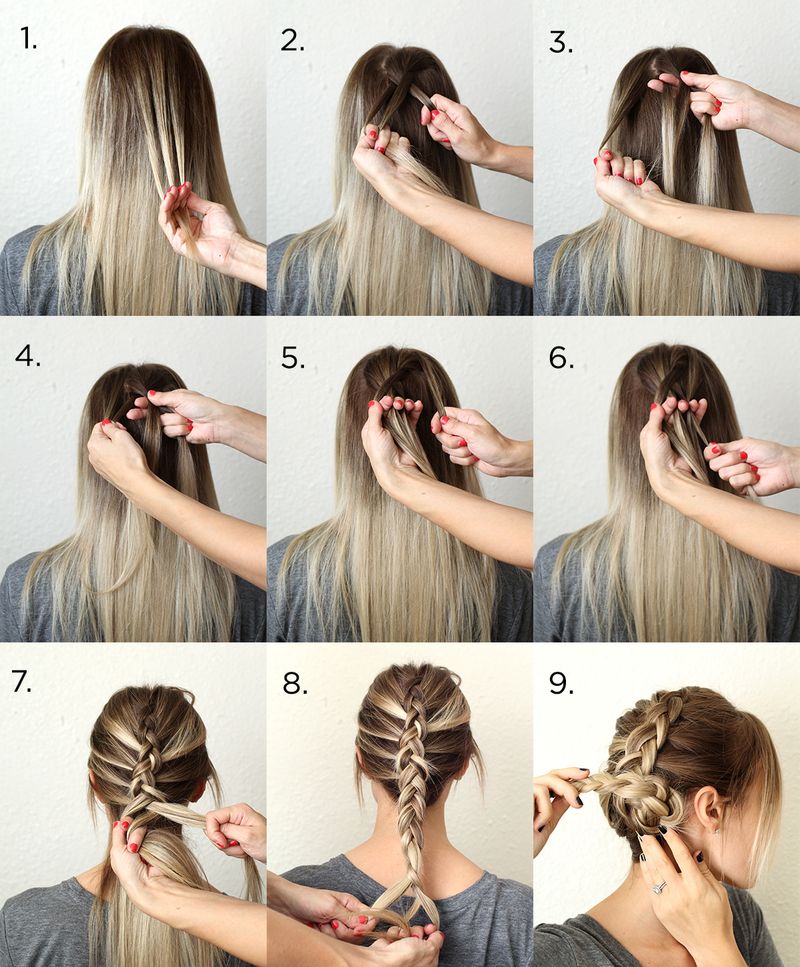Mastering the Art of Dutch Braids: A Step-by-Step Guide for Parents
Hello there, all you beautiful parents! Are you looking to switch up your little one’s hairstyle game with something both charming and sturdy? Dutch braids might just be your new best friend! Whether it’s for school, playdates, or a special occasion, Dutch braids are a classic, versatile hairstyle that stay put through all sorts of child’s play. Let’s unravel the mysteries of this adorable hairstyle together!
Why Dutch Braids are Perfect for Kids!
Dutch braids, often known as “reverse French braids” or “underhand braids”, are an all-time favorite for their neat appearance and durability. Unlike a traditional French braid, where hair is braided over the top, a Dutch braid pops out, adding a delightful 3D effect to your little one’s look. Not only are Dutch braids incredibly cute, but they’re also practical – keeping hair out of your child’s face and minimizing tangles, which we all know is a win in any parent’s book! So, let’s braid away!
What You Will Need
- Comb or hair brush
- Hair elastic bands
- Hair clips or bobby pins (optional)
- Detangling spray or conditioner (if necessary)
- Patient child (important!)
- Your skillful hands
Preparation: Getting Those Tresses Ready!
Begin by ensuring your child’s hair is knot-free. If you encounter some resistance, a detangling spray or a bit of conditioner can work wonders. Next, divide the hair with a comb down the middle of the head to create two equal sections; this is particularly important for achieving symmetrical Dutch braids. You can use a hair clip to secure one section while you work on the other. Remember to reassure your little one and keep the atmosphere light and fun – this can be a bonding experience!
The Basic Dutch Braid Technique
Now, let’s get down to business! Here’s a simple step-by-step guide to creating that perfect Dutch braid:
Step 1: Begin At The Top
Pick a small section of hair at the top of the head and divide it into three even strands. Here’s where the magic begins!
Step 2: Underhand Technique
Rather than crossing the strands over the top as in a French braid, for a Dutch braid, cross them underneath. Take the right strand and cross it under the middle one, then take the left strand and cross it under the new middle strand. This “under” technique is key to getting that raised braid look.
Step 3: Add Hair as You Go
Continue to braid, adding small sections of hair from each side into the strands before crossing them under. Keep the braid tight and the sections defined to avoid loose or messy looks.
Step 4: Secure the Braid
Once you reach the nape of the neck and there’s no more hair to add, continue braiding normally and secure the end with a hair elastic. Voila! You have one Dutch braid done.
Repeat the same process on the other section of hair to create a matching pair, and you’ll have a look that’s twice as nice. Remember to keep chatting with your child to make sure they’re comfortable and enjoying the process.
With a bit of practice and patience, you’ll be a Dutch braid pro in no time! But wait, there’s more to learn. In our next section, we’ll discuss cute variations, how to maintain the style, and tips for keeping those braids looking fresh! Stay tuned, and keep your fingers nimble!
Dutch braiding is not just a hairstyle; it’s an opportunity for creativity and connection with your children. So grab your comb, gather your elastics, and get ready to make some memories—plus lovable and durable Dutch braids, of course. Get ready to braid, set, go!

5 Things Parents Should Know Before Preparing for a Dutch Braid
1. Hair Texture and Length Matters
Your child’s hair texture and length can affect the braiding process. Fine, slippery hair might require a bit of styling product like mousse or a spritz of hairspray to add grip. Thicker hair typically holds braids better but might be more challenging to manipulate. Ideally, hair should be long enough to braid comfortably — typically shoulder length or longer works best for Dutch braids.
2. Detangling is Key
Before starting, thoroughly brush your child’s hair to remove all tangles. Working through knots during braiding is not fun for anyone and can lead to a less tidy braid. If your child’s hair is particularly knotty, consider using a detangling brush and spray to ease the process without causing discomfort.
3. Practice Makes Perfect Braid
If you’re new to braiding, practice makes perfect. Don’t get discouraged if the first few attempts aren’t flawless. Consider practicing on a doll with long hair or even a willing family member. The more you braid, the more natural it will feel, and the faster and better you’ll get.
4. Consistent Tension is Crucial
Maintaining a consistent tension on the hair strands as you braid is essential for keeping Dutch braids neat and secure. If the braid is too loose, it’s likely to unravel quickly, especially with active kids. Conversely, if the braids are too tight, it can be uncomfortable for your child. Find a happy medium where the braids are snug but not causing any tension headaches.
5. Patience and Distraction Help
Kids can become impatient, especially if they’re not used to having their hair styled for extended periods. Be patient, and try to keep the braiding sessions short and sweet. Distraction techniques, like storytelling, watching a favorite show, or listening to music, can keep your child entertained while you braid.
Cute Dutch Braid Variations
Dutch braids are incredibly versatile, and with a little creativity, you can create various looks that are sure to turn heads. Here are a couple of adorable variations you can try:
Dutch Braid Pigtails
This classic version involves creating two Dutch braids on each side of the head, which is perfect for an everyday playful style. You can dress it up with ribbon or mix in colored hair ties for added fun.
Dutch Braid Crown
For a more elegant occasion, you can transform Dutch braids into a crown or halo around your child’s head. This method involves braiding around the head instead of down the back and is terrific for weddings, family photos, or anytime you want a royal touch.
Maintaining and Refreshing Dutch Braids
To maintain the Dutch braids looking neat, here are a few tips:
- Sleep on a silk or satin pillowcase to reduce frizz and tangles.
- Use a light hair oil or serum on the braids to tame flyaways and add shine.
- For looser styles, you can lightly pull at the loops of the braid after securing it to fluff it up for a more relaxed, bohemian look.
- For lasting braids, consider braiding damp hair, which can help the style hold longer once it dries.
- Refresh braids in the morning by smoothing out bumps with your fingers or a tail comb, and re-securing with hair ties if necessary.
There you have it, dear parents – you are now equipped with the knowledge to create enchanting Dutch braids that your child will love, and that will make your mornings a little smoother. Happy braiding!
For more great articles please see here. For more information see here
Disclaimer
The articles available via our website provide general information only and we strongly urge readers to exercise caution and conduct their own thorough research and fact-checking. The information presented should not be taken as absolute truth, and, to the maximum extent permitted by law, we will not be held liable for any inaccuracies or errors in the content. It is essential for individuals to independently verify and validate the information before making any decisions or taking any actions based on the articles.




